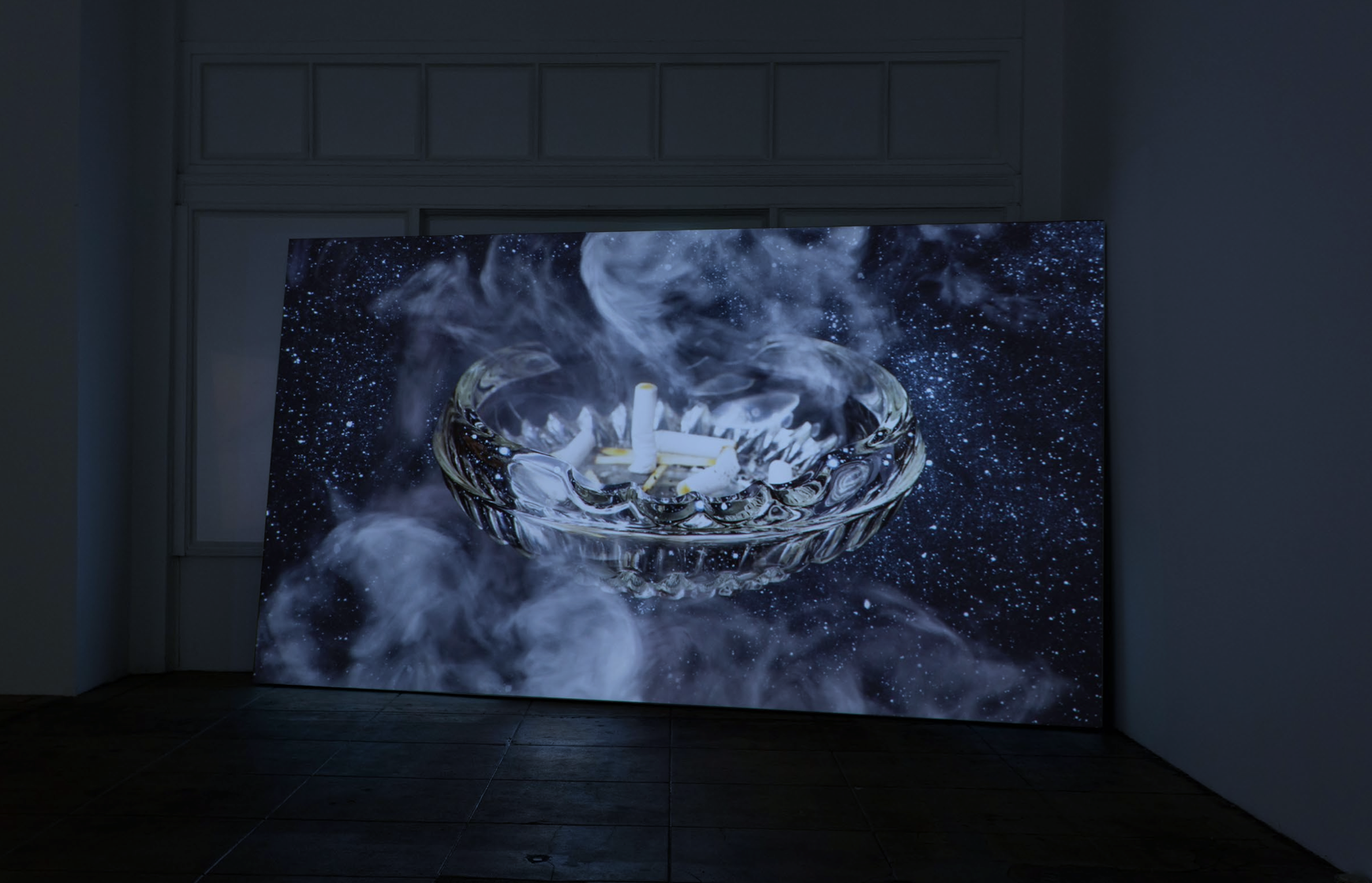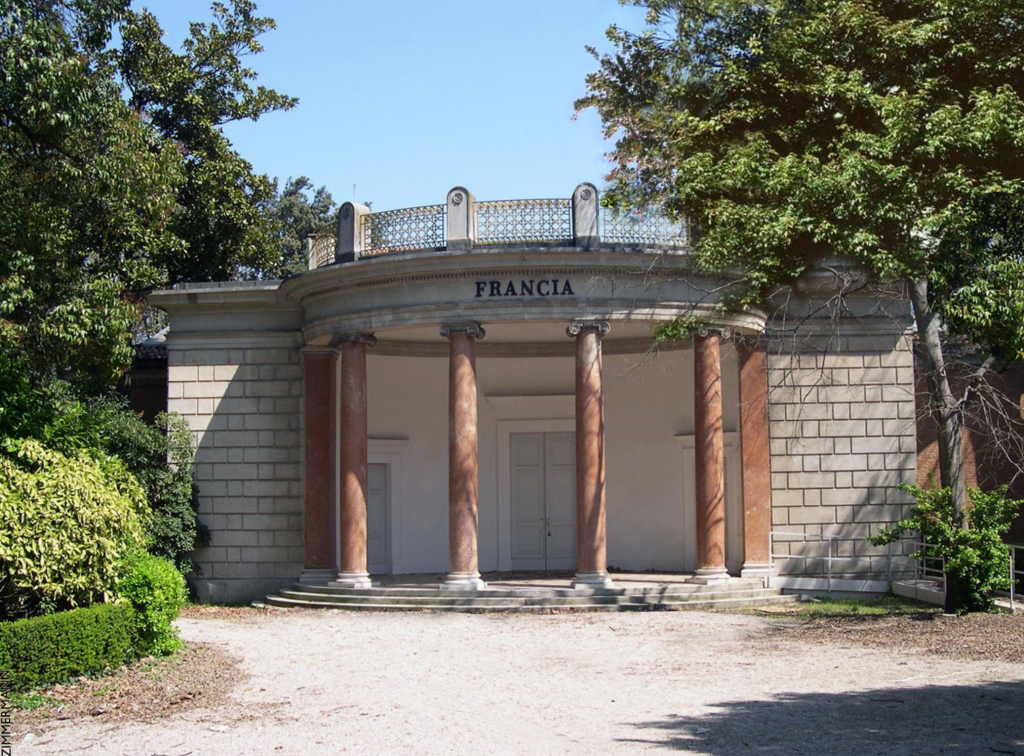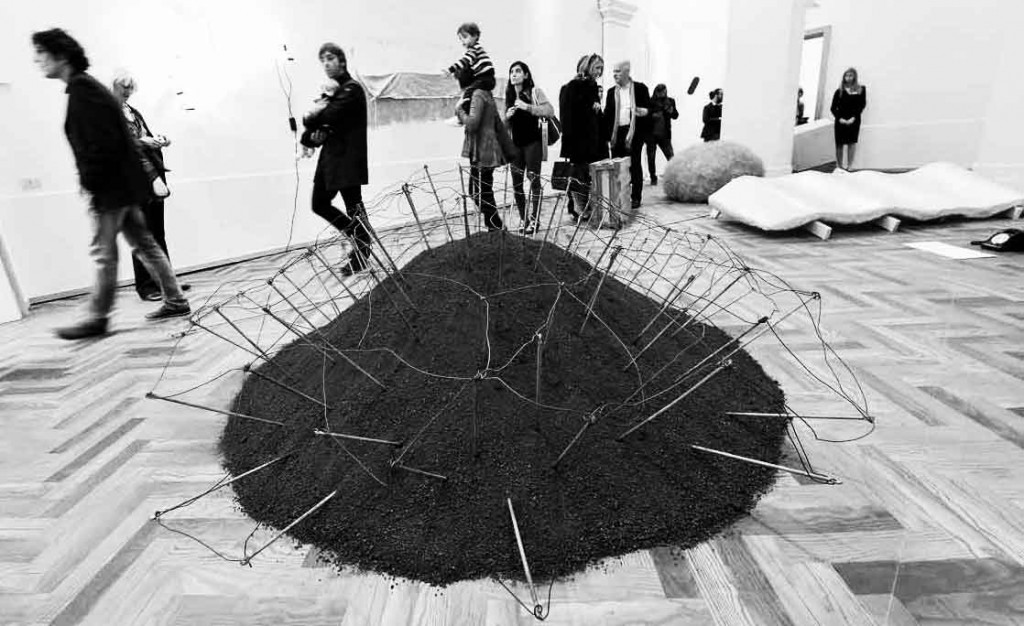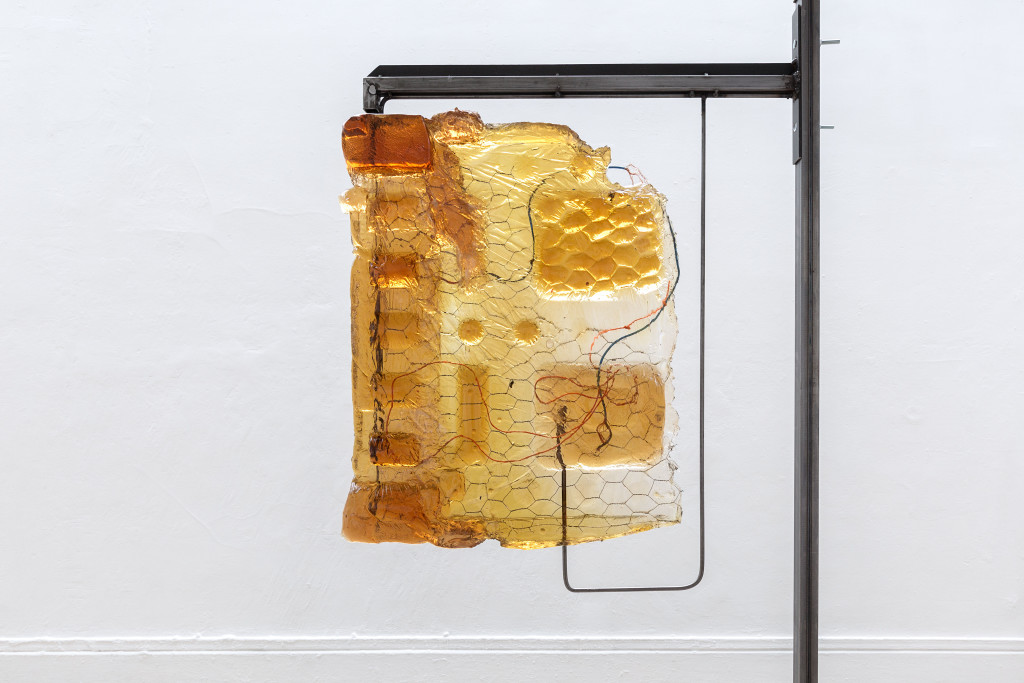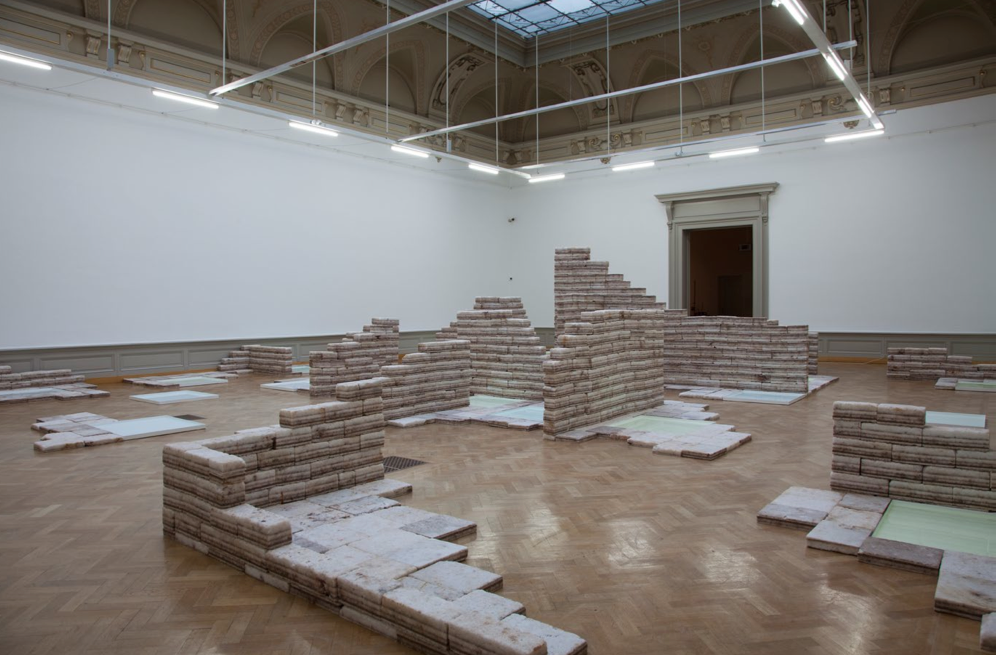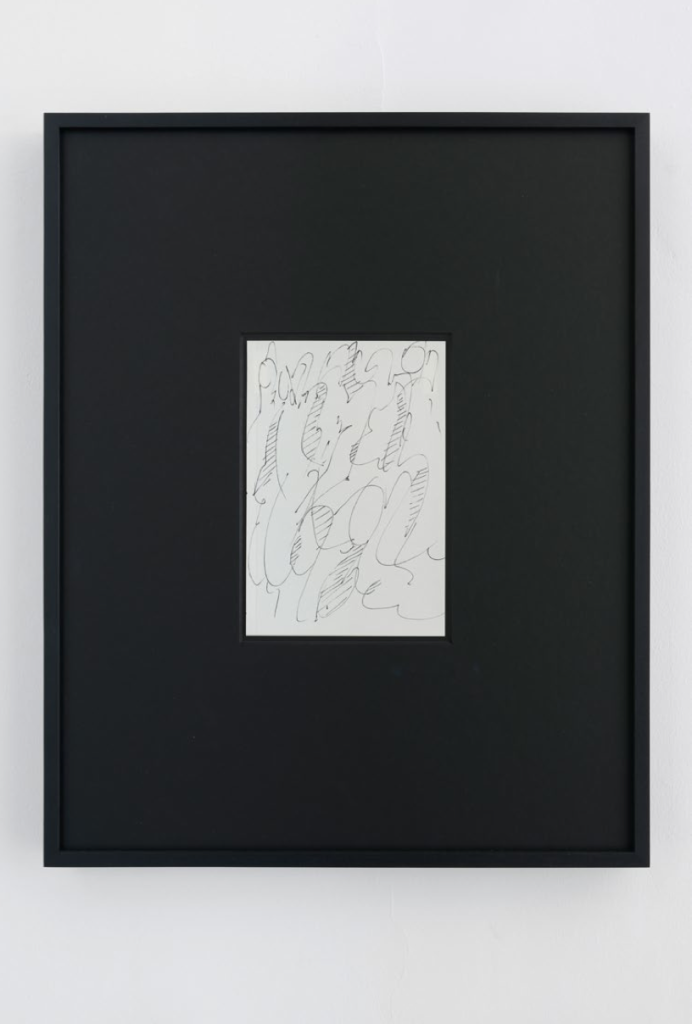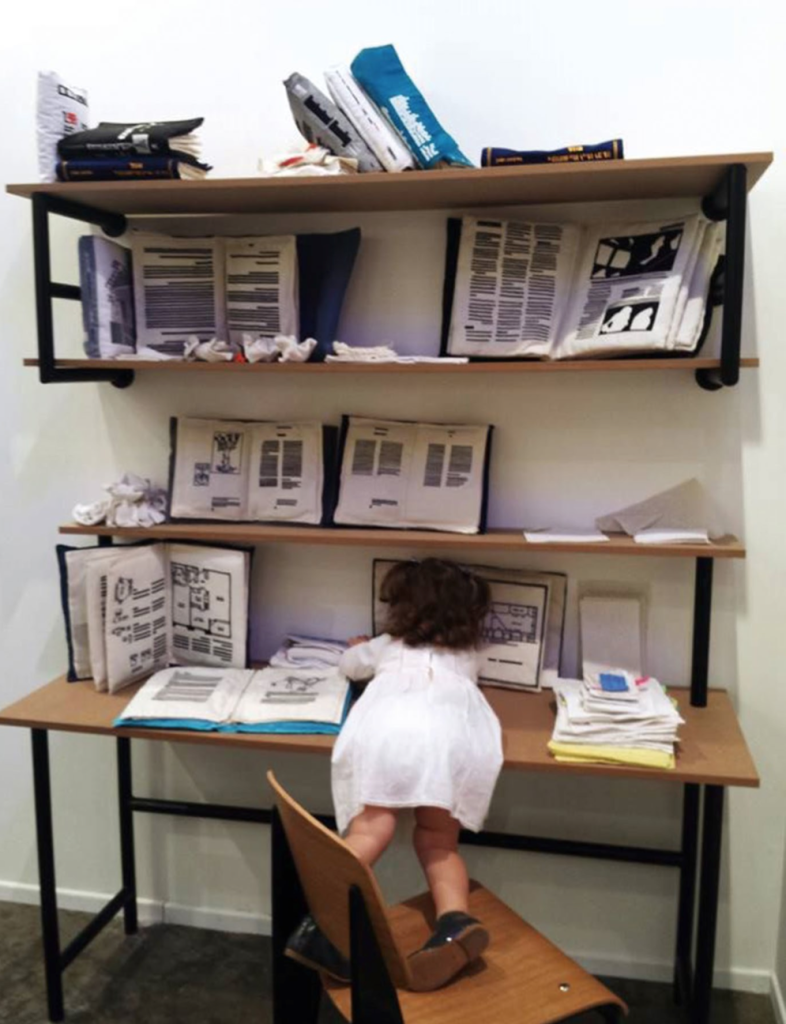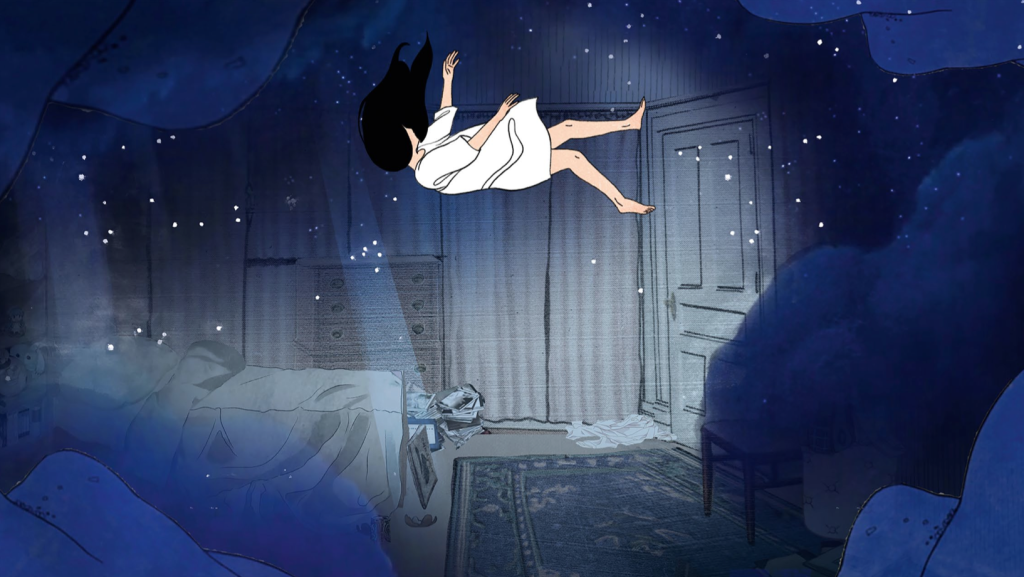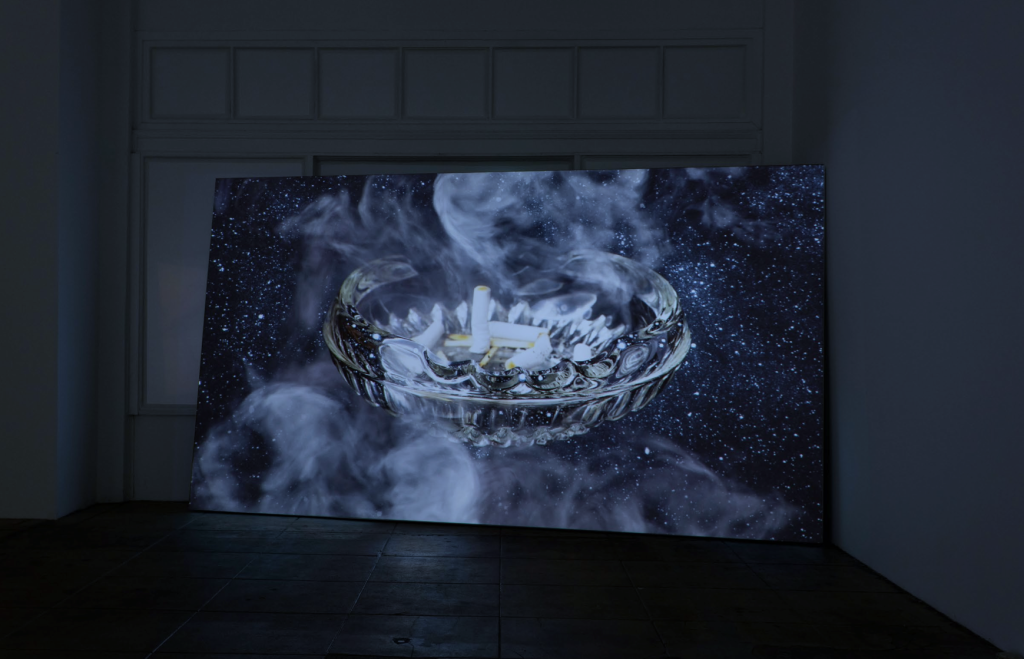
VENICE BIENNALE, NEW GENERATION
By Crash redaction
“THE MILLENNIAL GENERATION IS MARKED BY AN INCREASED USE AND FAMILIARITY WITH COMMUNICATIONS, MEDIA, AND DIGITAL TECHNOLOGIES. IN MOST PARTS OF THE WORLD, THEIR UPBRINGING WAS MARKED BY AN ULTRA LIBERAL APPROACH TO POLITICS AND ECONOMICS; THE EFFECTS OF THIS ENVIRONMENT ARE DISPUTED.” THE MILLENNIALS OF THE 57TH VENICE BIENNALE COME FROM ALL OVER THE WORLD AND DEMONSTRATE A KEEN AWARENESS OF THE CHALLENGES AWAITING US IN THE BEGINNING OF THIS CENTURY. THE WEAPON THEY HAVE CHOSEN TO CREATE CHANGE IS ART: LET’S MEET THEM TODAY.
AGNIESZKA POLSKA
Agnieszka Polska has quickly earned a reputation as an Eastern European phenom of Postinternet Art, with sensual and unsettling videos like “I Am the Mouth II,” a clip in im- perfect 3D showing a large mouth half submerged in a glimmering lake. Yet many have forgotten Polska’s first efforts in animation, such as the tender “Medical Gymnastics,” in which little paper figurines exercise in stop motion, or her more political videos playing on the clichés of Po- land’s avant-garde intellectual elite shot in square format with actors. In her work, Polska riffs on the impeccable image of the artist and citizen of the former Soviet bloc, made all too aware of her position at the center of European history through the tragedies that have shaped her destiny, just as World War III looms without our even knowing the combatants.
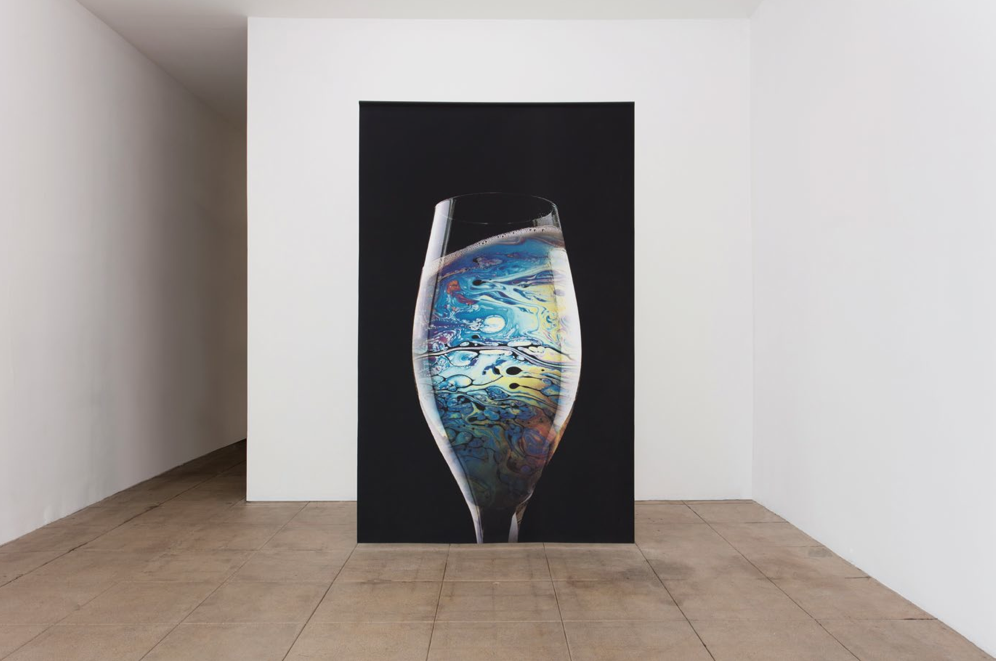
“Glass of Petrol” 2015, Printed textile
118 x 73 1/2 in / 300 x 187 cm
Courtesy of the artist and Overduin & Co., Los Angeles Photo credit: Brian Forrest
GUAN XIAO
Guan Xiao is a young Chinese artist based in Beijing whose work has already gained widespread currency in Europe. Recently, we have notably seen her art displayed at the Berlin Biennale, the ICA in London, and Jeu de Paume in Paris. The artist produces sculptures, art environments, and videos that bear a clear resemblance to the Postinternet movement, though hybridized with a sort of Post-Industrial and kitschy Pop aesthetic. We may ask ourselves if this cartoonish world reveals a cultural accent specific to an Asian approach to the object, conveying an awareness of the mass production of the object in its almost monstrous simplicity and economic efficiency. Portraits of the artist frequently show her dressed up in manga costumes, striking sexy and provocative poses among groups of her sculptures. No political dis- course for Guan Xiao, but instead a merry sort of acceptance of the triumphant capitalism that marked her country throughout her youth.
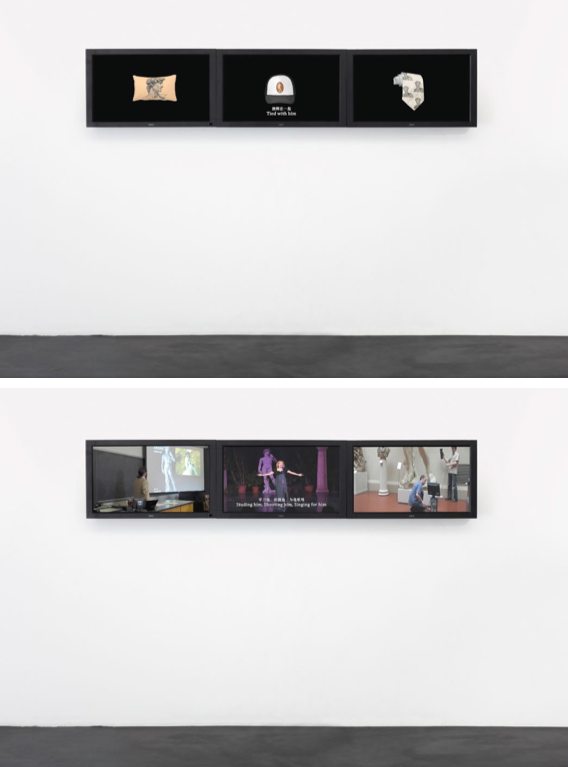
Something Happened Like Never Before, exhibition view, Kraupa-Tuskany Zeidler, 2014 Photo by Hans-Georg Gaul Courtesy: the artist, Kraupa-Tuskany Zeidler,
Berlin and Antenna Space, Shanghai
MARCOS AVILA FORERO
Marcos Avila Forero is a young Franco-Colombian artist who has already sown controversy. A large portion of the art world celebrates him as a gifted visual artist, whose visceral installations and images investigate the Colombian landscapes devastated by years of civil war in a spectacular yet human way. At the same time, others see him as ambitious to appeal to European audiences by offering an exotifying look at his native country. In any case, the stories told by Avila Forero deserve to be known, also for their factual and didactic side as when the artist exhausts the visual resources at his disposal and tends towards literal, easy images. Instead of doubting Avila Forero, we should celebrate his gift for photography and sculpture, though occasionally produced in a borrowed style that is too laden with historical and political symbolism.
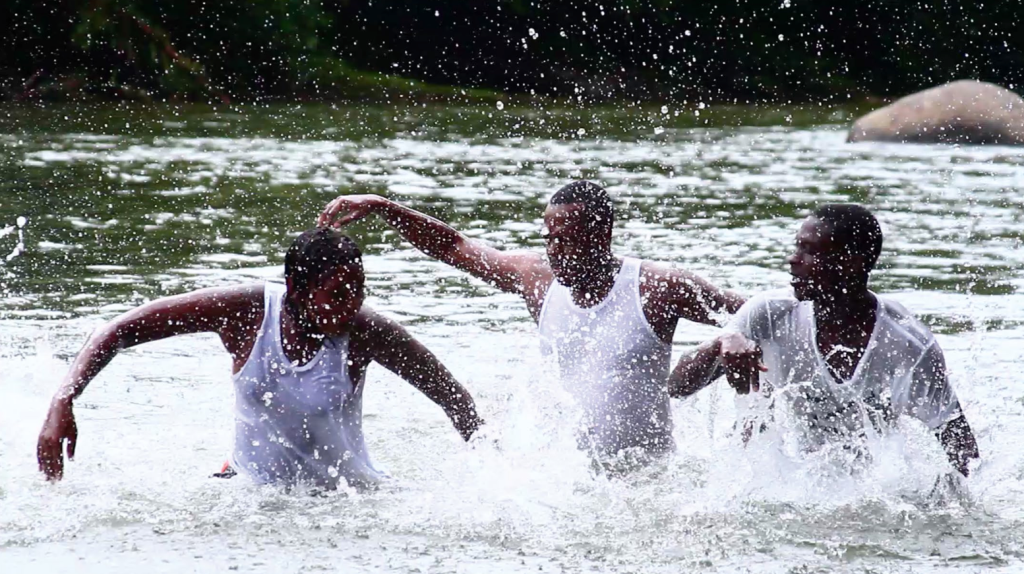
Atrato, 2014 HD video, 16 : 9, color, sound, 13’52’’, edition 3 of 5 + 2 AP,
English and French version Collection Centre National des Arts Plastiques – Fonds National d’Art Contemporain (France)
JULIAN CHARRIERE
Julian Charrière is a young Swiss artist who has spent the past few years working in Berlin. Clearly struck by the total ignorance shown by young urbanites of desert landscapes and what remains of untouched nature, as well as natural sites profoundly damaged by mankind, he sees art as an opportunity to brave the unknown and conduct experiments – such as when he travels to Antarctica to melt an iceberg with a blow- torch for several hours, or when he collects samples of radioactive soil in Semipalatinsk, Kazakhstan and distorts photos taken on site. Conversely, his installations set up within urban spaces seek to restore an unknown and savage quality to the city. We might see Julian Charrière’s work as a manifestation of our growing disconnection from the landscapes constituting the back- drop to that ultimate expression of modernity that is urban life. German police recently mistook a machine the artist was building for the Antarctic Biennale for a homemade cannon. Seized after neighbors reported the item to authorities, the item lives on as a conceptual work now held in police custody.
ACHRAF TOULOUB
Achraf Touloub is a Moroccan artist based in Paris whose work alternates between abstraction and figuration to generate an interesting cross between conceptualism and formalism. His two-dimensional surfaces, covered in penciled wave patterns or repetitions of contemporary faces and old-fashioned poses, flirt with the trappings of painting only to better delineate their distance from the medium, as excessively dainty frames play on the cream hues of paper and the brilliant blacks of screens, used as motifs on walls and other surfaces. His work often recalls Adel Abdes- semed’s essential 2005 piece “God is Design,” which questioned one of the biggest issues in our Eurasian society with visionary simplicity.
HAO LIANG
Hao Liang once said in an interview: “The ideal of Shan Shui painting isthe unity of man and nature. It seeksa relationship between the humanbody and nature. In Western lands-cape painting, the emphasis is on observing and dominating nature.”As we can see, the young painter trained in classic techniques like the traditional Shan Shui, which is the 2. art of painting the mountain and water motifs so prevalent in Chinese landscape painting, has set himself apart from other young Chinese artists who focus obsessively on modernity, consumerism, and mass production. Instead, Hao Liang flexes his perfect technical mastery to convey a personal interpretation of aesthetic motifs and dynamics inherited from ancestral traditions like silk painting to create scenes often inspired by Chinese and international literature. Whether or not we like the images and stories invented by Hao Liang, we have to applaud the spiritual maturity of this young painter of 33.
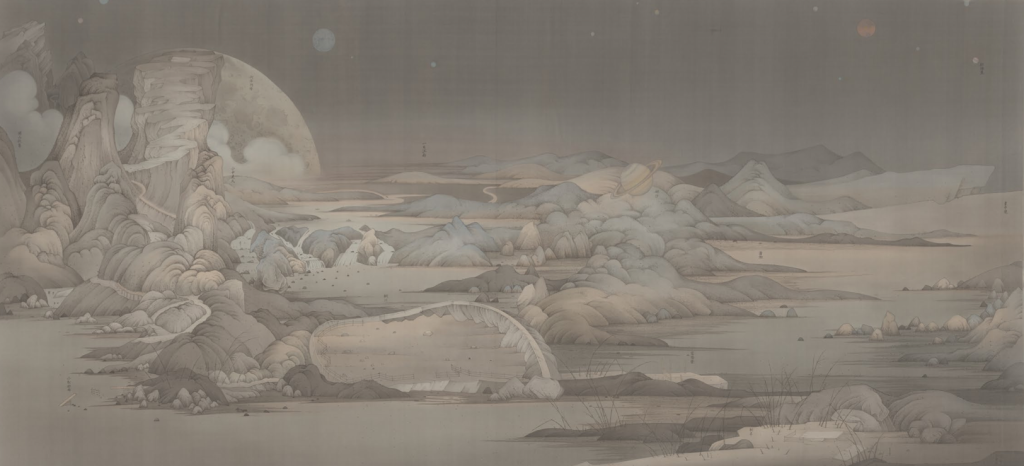
Eight Views of Xiaoxiang – Relics, 2015-2016, Ink on silk, 184×387 cm, private collection. Photo : courtesy of the artist
PETRIT HALILAJ
While firmly rooted in a certain his- tory of Western art, the works of Kosovar artist Petrit Halilaj offer an interesting example of the reverberations of European pagan influences. To a certain degree, the Balkans have remained a separate province in Europe, home to syncretic cultures influenced by the traditions of Eastern Europe, the Mediterranean Basin, and Continental Europe – all of which line up conveniently with the list of cities where the artist has worked: Bozzolo (Italy), Berlin (Germany), and Pristina (Kosovo). Mixing living and stuffed animals, wooden structures in a Medieval vernacular, precious metals, and excrement, her installations sing with poetry and a note of nostalgia of a time when individuals were defined by more than ownership, while reminding us that it was not that long ago when Europe was still able to generate exoticism based on differences observed even within such a small continent. Today, that exoticism faces the prospect of extinction under the homogenization of cultures, the dictates of capital, and the historic rise of xenophobia – the same tendency that may have set so many fires and spilled so much blood throughout the Balkans during the 20th century.
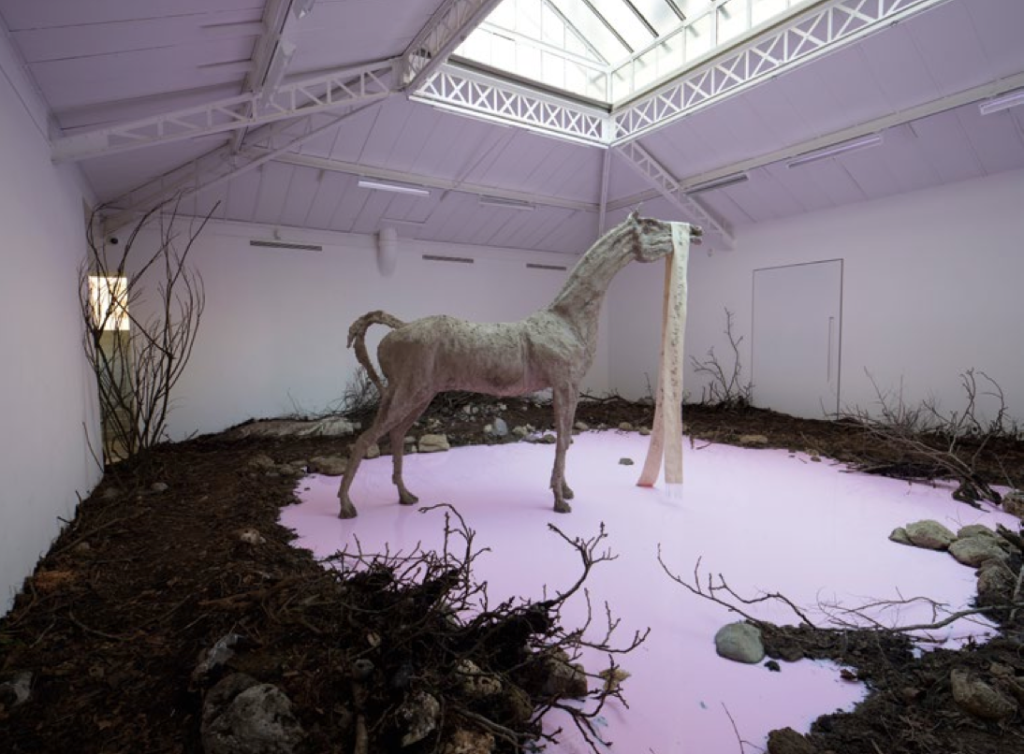
Exhibition view 2014 Installation. Mixted media
(soil, branches, dead leaves, stones, soap), kamel mennour, Paris, 2014 © Petrit Halilaj Photo. Fabrice Seixas & archives kamel mennour Courtesy the artist and kamel mennour, Paris/London
KATHERINE NUNEZ & ISSAY RODRIGUEZ
Born respectively in 1992 and 1991, Katherine Nuñez and Issay Rodríguez are the youngest artists at the Venice Biennale. The global art world first took notice of the two Filipino artists during Art Dubai with their collective 98B COLLABoratory. For the Biennale, they are preparing a work drawing on a process the pair have used in the past and will update for the occasion, apparently evoking the very idea of “labor” involved in the production of a work of art. On the Biennale’s status as the quintessence of the Western art world in relation to the art scene in their homeland, Issay Rodríguez says: “It’s like joining or cooking for a special dinner in a different village who used to send crops to you though a small hole in a wall for years. Learning to cook it from the other side, seeing their garden once, going back and using your own tools and spices to come up with a dish you can share: this is the closest way by which I could imagine what the Venice Biennale is.”
RACHEL ROSE
When attempting to write about her work, it is difficult to overlook the impeccable pedigree and legacy of privilege embodied by the young American artist Rachel Rose. Edu- cated at Columbia and Yale – notably by painter Robert Reid who influenced an entire generation of artists like Matthew Barney and Sarah Zee – Rachel Rose has in five years assembled a resume of video installations equaled in their virtuosity only by her artist interviews. These compelling moments of artistic discourse have earned her the praise of prestigious institutions around the world. But what does Rachel Rose talk about? Further exploring the existential doubts of relational aesthetics (her films call to mind Parreno and Huyghe), Rose offers intelligent commentary on the duplicity of human relations, anxieties concerning technology, the beauty of landscape and nature, or many other commonplace topics – all while ambiguously respecting the spectacle she condemns.
TAUS MAKHACHEVA
Taus Makhacheva is first and foremost a video artist who explores the many facets of her native region of Dagestan in Russia. Her films document landscapes, faces, and costumes through polished scenes that provide the backdrop to choreographed actions. While fiction appears here and there, it does not seem like the main goal of the artist, who focuses instead on triggering aesthetic emotions in the viewer through her precise photography and easy maneuvering between genres, from documentary and archival images, to performance and sketch comedy. Relying on actors found most likely from the street or among her friends, Makhacheva admits that she is painting a portrait of the “Caucasian world” through contemporary art. That same quest seems to have become a commonality among young “European” artists: seeking out Europe’s roots in a way that does not tumble into essentialism or supremacy.
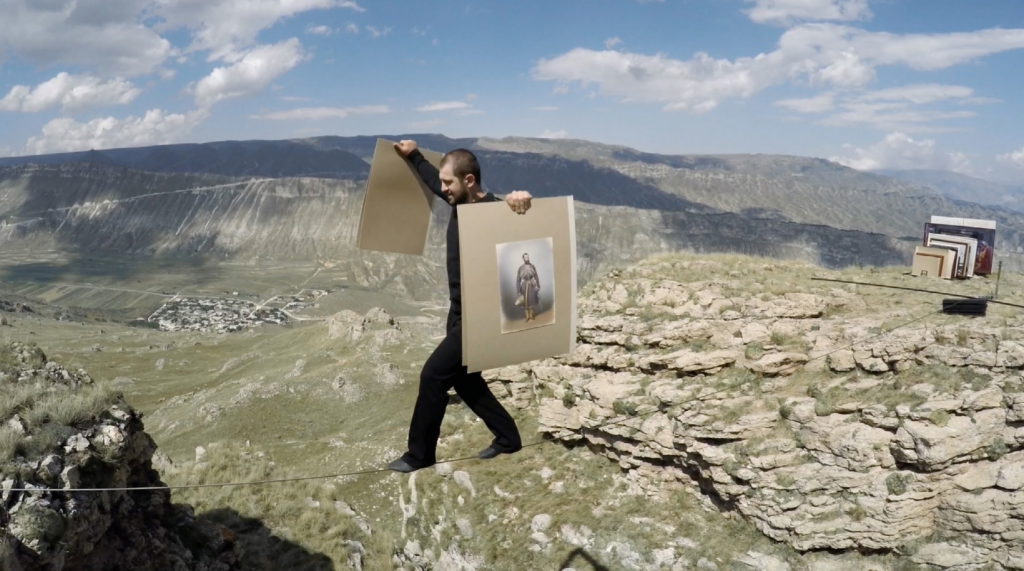
Landscape, 2013 – ongoing Series of wooden objects Dimensions Variable Courtesy of the artist and narrative projects, London
Written by Dorothée Dupuis






